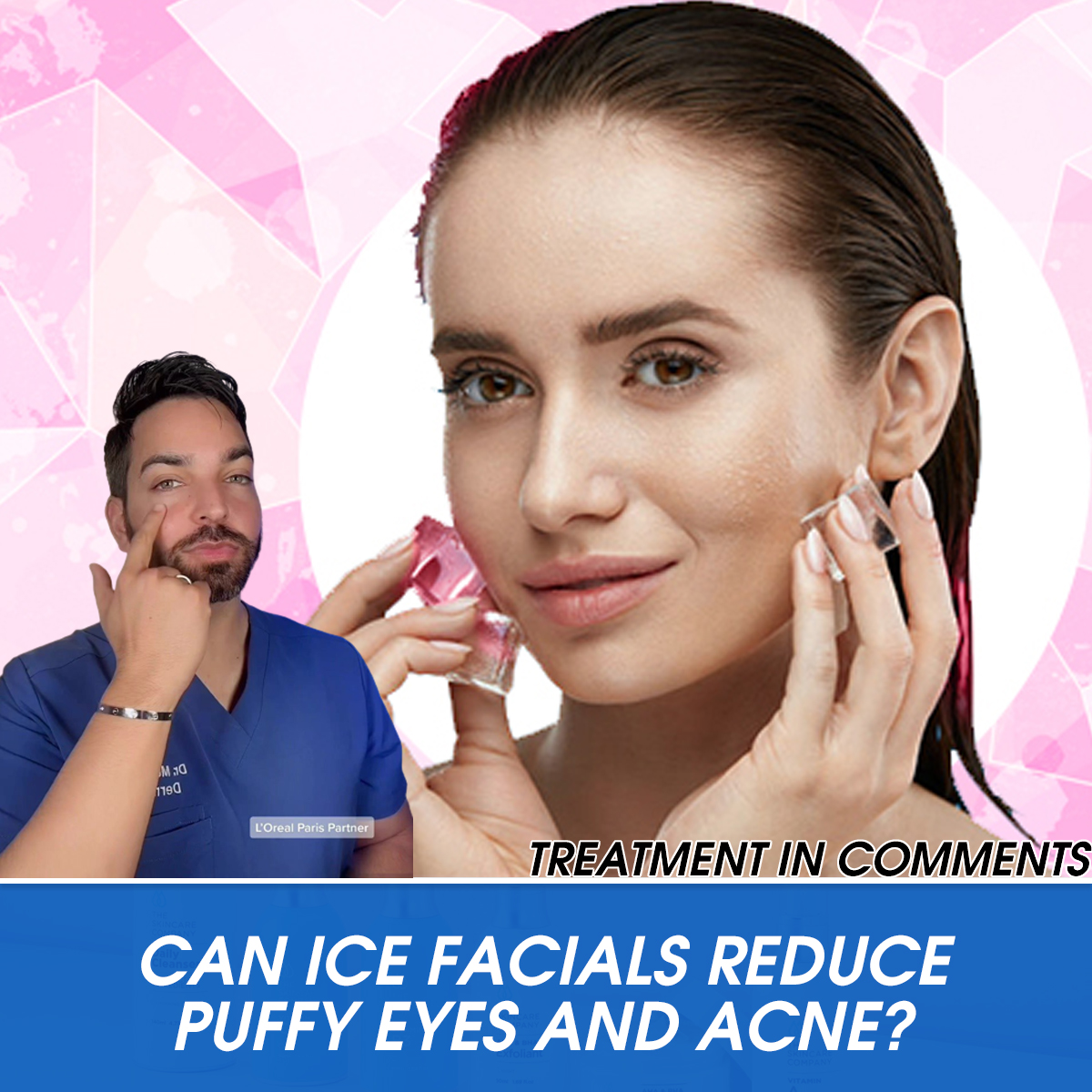
The practice of facial skin icing is gaining traction. While there is no scientific evidence to back up its efficacy, it is anecdotally said to benefit people with conditions such as acne or swollen eyes.
Applying ice to an area of the body for health purposes is known as cold therapy or cryotherapy. It’s routinely usedTrusted Source in the treatment of contusion injuries to:
- ease pain by temporarily reducing nerve activity
- lessen swelling by reducing blood flow
- speed up functional recovery by promoting soft tissue healing
Proponents of ice facials, or “skin icing,” suggest that it can be used to:
- eliminate puffiness, especially around the eyes
- reduce oiliness
- ease acne
- soothe sunburn
- reduce swelling and inflammation, including rashes and insect bites
- reduce signs of aging, such as wrinkles
- boost the skin’s healthy glow
These claims are only supported by anecdotal evidence. There’s no definitive clinical researchTrusted Source indicating that ice facials can address these conditions.
Keep reading if you’re still curious about this popular face treatment. We’ll tell you more about it, including how to apply the ice to your face, alternative ingredients for your ice cubes, and best practice tips.

How to apply ice to your face
Advocates of ice facials suggest rolling four or five ice cubes in a soft cotton cloth. They then recommend using the covered ice cubes to gently massage your face with circular motions for a minute or two.
The circular massage can be performed a few times every day on your:
- jawline
- chin
- lips
- nose
- cheeks
- forehead
Purported benefits of ice facials
Ice for puffy eyes
The American Academy of Ophthalmology suggests that you can reduce bags under your eyes by applying a cold compress to the area with mild pressure for 15 to 20 minutes.
Try combining ice therapy with antihistamines or anti-inflammatory medications to combat puffy eyes.
Ice for acne
Advocates of using skin icing to treat acne suggest it can slow down inflammation and minimize skin pores to reduce excessive oil production.
Due to its anti-inflammatory natureTrusted Source, ice is more likely to help inflammatory acne, such as:
- cysts
- nodules
- pustules
- papules
If using ice facials to address acne, change your ice and wrapping often to avoid spreading bacteria from one part of your face to another.
Ice should not replace your skin care routine.
Ice doesn’t have to be frozen water
Proponents of ice facials suggest using ice cubes made of water or a caffeinated drink such as tea or coffee.
According to older research from 2013, caffeine can penetrate the skin and increase circulation.
Some advocates of natural healing suggest replacing the water in your ice cubes with other ingredients, such as aloe vera and green tea.
Anecdotal evidence suggests that ice cubes made with these ingredients can fine-tune the facial treatment for specific conditions.
Aloe ice
In the natural health community, aloe vera is used for a number of skin conditions. The National Center for Complementary and Integrative Health (NCCIH)Trusted Source says aloe may speed burn healing and improve acne, but more research is needed.
Anecdotal evidence suggests that frozen aloe maintains its healing powers and can soothe sunburn and acne. Proponents of this practice say that if you don’t have frozen aloe, you can apply aloe gel to your skin before doing your regular ice facial.
Green tea ice
A number of studies, including one from 2015 published in the BMC Complementary Medicine and TherapiesTrusted Source, suggest that the catechins in green tea are antiviral and antibacterial.
Advocates of ice facials suggest that using ice cubes made from green tea can combine the benefits of ice on your face with antivirus and antibacterial properties.
Tips for facial icing
Before giving ice facials a try, discuss it with your healthcare or skin care professional. They may have some concerns or suggestions for your skin condition, medications you may be taking, and current health status.
If you get the green light from your healthcare professional, here are some recommended tips to follow:
- Use a dedicated ice tray for the cubes you’ll be using for your face. Clean it after each use.
- Always wash your face before icing.
- Keep a clean washcloth or tissue handy to wipe excess liquid that might drip from your face.
- Use a cloth or some other barrier between the ice and your skin. This will protect your hands and face.
- Avoid holding the ice on your skin for too long. Prolonged exposure to freezing temperatures can result in ice burn.
Why are ice facials so popular?
The popularity of facial skin icing is simple to explain. If fits the profile of a health fad, including:
- It’s inexpensive.
- It’s easy to do.
- There’s anecdotal evidence.
- It’s widely covered on the internet.
- It’s natural, non-chemically based.
- It’s presented as a logical, sensible practice.
Facial skin icing is very popular. Although not supported by clinical research, there’s anecdotal evidence that it could be helpful for a number of conditions, such as acne and puffy eyes.
Many proponents of the practice suggest making ice cubes with different ingredients, like aloe or green tea, to address specific skin care needs.
If you’re considering ice facials, discuss the idea with your healthcare professional first. They can determine if icing your face is appropriate for your current health condition and any medications, especially topical, that you’ve been prescribed.







